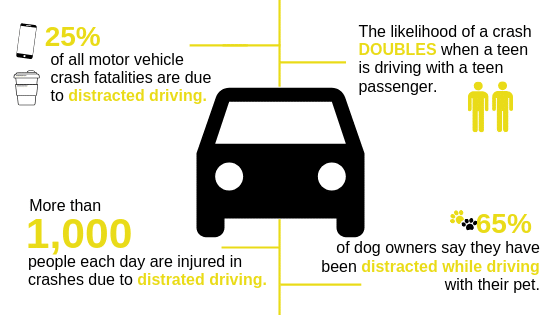

- Texting while driving risk vs undistracted drivers#
- Texting while driving risk vs undistracted Bluetooth#
- Texting while driving risk vs undistracted download#
You can turn it on manually through the Control Center, or automatically, whenever the iPhone detects you may be driving, when it’s connected to your car’s Bluetooth, or when it’s connected to CarPlay.
Texting while driving risk vs undistracted download#
In addition, you can download the SMS Auto Reply app. You can choose how long you want the setting to remain active and even schedule it to activate automatically each night when you’re sleeping. Tap on that and find the text that reads “Do not disturb.” When you click on it, a selection of settings will appear. On some phones, instead of the icon, you’ll see “Notification settings” at the bottom of the screen. This function allows you to mute sounds, stop vibrations, and block any visual distractions. Tap the Do Not Disturb icon, which is a circle with a horizontal line through the center.


Texting while driving risk vs undistracted Bluetooth#
Using your phone’s modes, like “Do Not Disturb” and car mode, and taking advantage of Bluetooth technology to go hands-free, can help you be less distracted and keep your attention on the road. A study by Carnegie Mellon showed that just listening to a cell phone hands-free reduced the amount of brain activity associated with driving (in the parietal lobe) by 37%.ĭriving apps are just one way to drive safely.
Texting while driving risk vs undistracted drivers#
That same year, 5% of drivers in fatal crashes were distracted when they occurred, including 8% of drivers ages 15 to 19 (teen drivers are the highest-risk group).According to the NHTSA, 15% of crashes leading to injury and 14% of all motor vehicle crashes reported by police in 2018 involved distracted driving.If those in the same survey admitted they’d done so in the previous month.If you’re going 55 miles per hour and take your eyes off the road for 5 seconds-the amount of time it typically takes to read or send a text message-you’ll have driven far enough to cover the length of a football field.According to the University of Utah, cell phone users are 5.36 times more likely to be involved in an accident than drivers who aren’t distracted.Here are a few statistics that illustrate the dangers of distracted driving: Distractions can be created by eating while you’re driving, trying to find the right channel on your radio dial, or turning around to tell the kids in the backseat to stop arguing. Distracted driving involves more than texting, though.


 0 kommentar(er)
0 kommentar(er)
